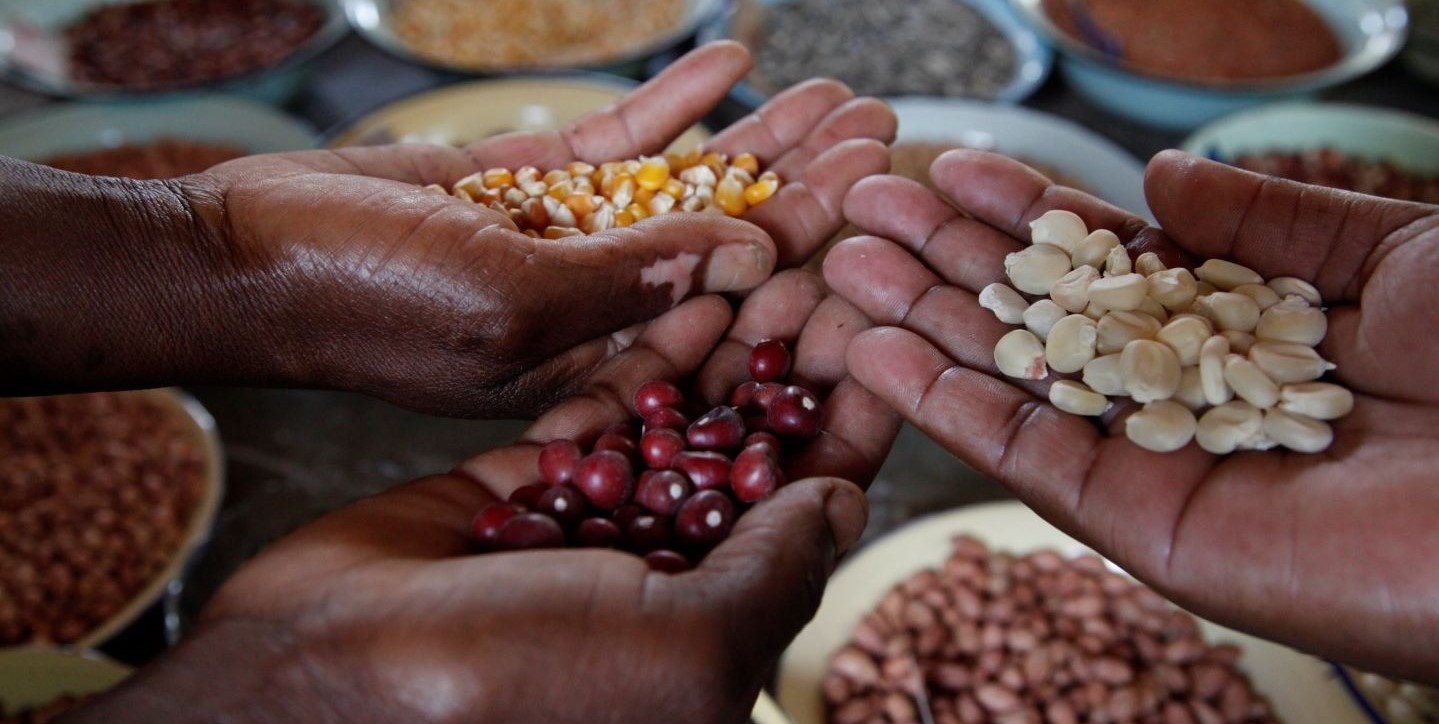How agrobiodiversity can nourish the planet
IFAD Asset Request Portlet
Asset Publisher
 Oxfam Novib
Oxfam Novib
The ways we currently practice agriculture are often harmful for the health of the planet – and even our own health. For our people and planet to flourish, we need to preserve biodiversity: the dizzying variety of ecosystems and living beings (from microbes to trees to blue whales), and all the genetic variety within species, that make our planet habitable.
Yet agriculture, especially intensive agriculture, is one of the biggest causes of biodiversity loss and a major contributor to climate change. And our dependence on a limited set of crops and animal breeds makes our food systems uniquely vulnerable to climate change, pests and diseases. Moreover, these food systems are failing to provide everyone with the nutrients they need: in 2020, nearly 2.4 billion people didn’t have access to enough nutritious food.
Fortunately, we have a solution to these challenges. This is agrobiodiversity: designing agriculture in such a way that, instead of diminishing the planet’s wealth of biodiversity, it enhances it. In musical terms, instead of a duet or quartet, we’ll have a full symphony orchestra.
Agrobiodiversity for sustainability
IFAD has long recognized the importance of agrobiodiversity for sustainable food systems. Our work with rural small-scale producers – farmers, pastoralists, fishers, indigenous peoples, and those who process the food they produce – has shown us that they depend on biodiversity for good nutrition, resilience and livelihoods, and consider it a crucial part of their identity and cultural heritage.
Small-scale producers are not just users of biodiversity: they are its guardians. They know that biodiversity makes for better food production, through healthier soils, pest control, better use of water resources and by pollinating crops. They understand that biodiverse environments are more resilient to climate change and natural disasters. Whereas large-scale intensive agriculture is currently a principal cause of diminishing biodiversity, low-input small-scale agriculture is helping to conserve it.
Much of our work with these producers focuses on helping them put systems in place that improve their incomes and livelihoods while conserving or even increasing local biodiversity. No wonder, then, that at the recent Second Agrobiodiversity Congress, we signed the Rome Manifesto in support of:
- Consuming diverse foods in diets that are nutritious, sustainable, affordable, acceptable, safe, and accessible to all
- Producing food in diverse, resilient, and sustainable food systems
- Conserving agrobiodiversity to give people the options they need to sustainably and inclusively transform food systems and improve lives, both now and in the future
In fact, many IFAD-funded projects already support the aims of the Rome Manifesto. In a recent stock-take, we found that over a third of our projects have a core component related to biodiversity, and another 39 per cent include activities linked to biodiversity. Let’s consider some recent examples.
Guardians of the ecosystem
In northern Burkina Faso, poverty frequently forces rural-dwellers to overexploit natural resources. But the short-term degradation of the ecosystem puts decent livelihoods ever farther out of reach.
The IFAD-supported Neer-Tamba project, in partnership with the National Forest Seed Centre, provides a variety of plants that are adapted to local conditions. Communities are now planting over 84,000 trees to hold back the encroaching desert, create habitats for wildlife, and make degraded lands usable.
And, near settlements, they’re cultivating nutritious foods and marketable plant products such as baobab, moringa, shea and locust bean – allowing communities to conserve forest resources while building profitable businesses.
Meanwhile, in Laos, the IFAD-supported FNML project teaches small-scale farmers how to make and apply a rich “compost soup” of effective microorganisms to their kitchen gardens. This enables beneficial bacteria to flourish, which conditions the soil and keeps pests in check. Farmers are reporting tastier vegetables and a return of wildlife like earthworms and ladybirds. Yields have shot up, even doubled, without the use of chemical fertilizers.
In the Caatinga biome of north-eastern Brazil, overgrazing and logging have led to severe deforestation, while climate change is causing devastating droughts.
Under the IFAD-supported Pro-Semiarid project, a creole seed programme recruits “seed guardians” who grow hundreds of genetically diverse plant varieties and preserve indigenous knowledge on their cultivation and use. Women are also encouraged to grow indigenous fruit trees in diverse backyard gardens, improving food security.
The project has also introduced biodiversity certifications so farmers can get a higher price for their produce – and over 1,000 hectares of degraded land have been restored.
Conserving the planet
While biodiversity already underpins many IFAD initiatives, we’re now taking this commitment even further. Through our new Biodiversity Strategy, we will systematically integrate biodiversity into our operations as a means of enhancing productivity and food and nutrition security, and as a way to help communities adapt to climate change. It’s a testament to how we’re putting the ideals of the Rome Manifesto into action.
We also intend to spend 30 per cent of our climate finance on nature-based solutions, which put biodiversity and ecosystems conservation at the centre of climate change adaptation.
Biodiversity is not just good for the planet – it’s the best way for rural-dwellers to eat healthily, celebrate their cultural identities and improve their livelihoods. That’s why we’re committed to helping governments and communities prioritize it as the keystone of our food systems.
Publication date: 02 February 2022